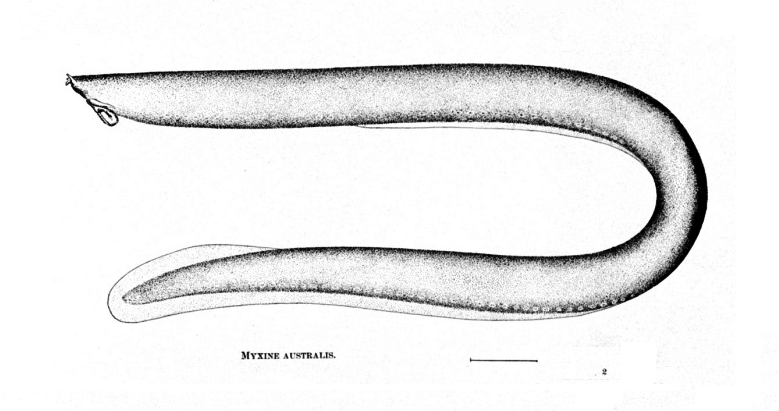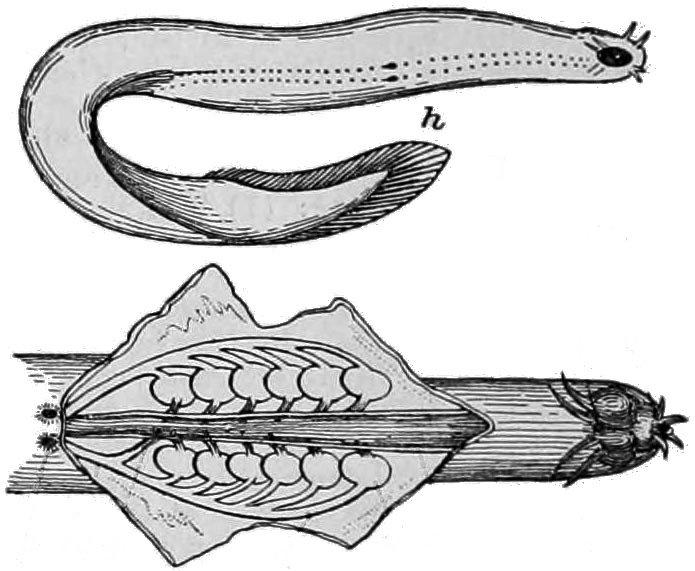|
Myxine
''Myxine'' is a genus of hagfish, from the Greek μυξῖνος (''myxinos'', "slimy"). It is the type genus of the class Myxini. In 2021, three new species of ''Myxine'' were described from the Galápagos including '' M. phantasma'', the only species of ''Myxine'' to not have melanin-based pigments. Species * '' Myxine affinis'' Günther, 1870 (Patagonian hagfish) * '' Myxine australis'' Jenyns, 1842 (southern hagfish) * '' Myxine capensis'' Regan, 1913 (Cape hagfish) * '' Myxine circifrons'' Garman, 1899 (whiteface hagfish) * '' Myxine debueni'' Wisner & C. B. McMillan, 1995 (Magellan hagfish) * '' Myxine fernholmi'' Wisner & C. B. McMillan, 1995 (Fernholm's hagfish) * '' Myxine formosana'' H. K. Mok & C. H. Kuo, 2001 (Formosa hagfish) * '' Myxine garmani'' D. S. Jordan & Snyder, 1901 (Garman's hagfish) * ''Myxine glutinosa'' Linnaeus, 1758 (Atlantic hagfish) *''Myxine greggi'' (Gregg's hagfish) * '' Myxine hubbsi'' Wisner & C. B. McMillan, 1995 (Hubbs' hagfish ... [...More Info...] [...Related Items...] OR: [Wikipedia] [Google] [Baidu] |
Myxine Glutinosa
''Myxine glutinosa'', also known as the Atlantic hagfish, is a type of Agnatha, jawless fish belonging to the class Myxini. Description The Atlantic hagfish may grow up to long, with no eyes and no jaws; its star-shaped mouth is surrounded by 6 mouth Barbel (anatomy), barbels. Their eyes also lack a lens and pigment (features found in the eyes of all other living vertebrates. There is a single gill slit on each side of the eel-like body. It has a total of 88–102 pores from which it can exude a slimy mucus. Hagfish have very flexible bodies which allow them to manipulate themselves into knots. The knots created by the hagfish remove mucus from the body, allow them to escape tight spaces, and pull potential prey from burrows, and because they have no opposable jaws it helps create leverage while they eat. Similar species A related species, the Gulf hagfish (''Eptatretus springeri''), occurs in the Gulf of Mexico. To distinguish these two types of hagfishes, we can look at the ... [...More Info...] [...Related Items...] OR: [Wikipedia] [Google] [Baidu] |
Hagfish
Hagfish, of the Class (biology), class Myxini (also known as Hyperotreti) and Order (biology), order Myxiniformes , are eel-shaped Agnatha, jawless fish (occasionally called slime eels). Hagfish are the only known living Animal, animals that have a skull but no vertebral column, although they do have rudimentary vertebrae. Hagfish are marine animal, marine predators and scavengers that can defend themselves against other larger predators by releasing copious amounts of slime coat, slime from mucous glands in their skin. Although their exact relationship to the only other extant taxon, living group of Agnatha, jawless fish, the lampreys, was long the subject of controversy, genetic evidence suggests that hagfish and lampreys are more closely related to each other than to jawed vertebrates, thus forming the superclass Cyclostomi. The oldest-known stem group hagfish are known from the Pennsylvanian (geology), Late Carboniferous, around Moscovian (Carboniferous), 310 million years ... [...More Info...] [...Related Items...] OR: [Wikipedia] [Google] [Baidu] |
Myxine Australis
The southern hagfish (''Myxine australis'') is a hagfish of the genus ''Myxine''. Description It is a harmless scaleless, eel-like animal with a pinkish body, a whitish head and a whitish mid dorsal stripe. The size of captured specimens ranges between 91 and 394 mm. The southern hagfish is found in the cold waters of the Southwestern Atlantic Ocean from the coasts off Southwestern Brazil down to the Southern Ocean and the Tierra del Fuego and the Patagonian coasts of Chile and Argentina, including the Strait of Magellan The Strait of Magellan (), also called the Straits of Magellan, is a navigable sea route in southern Chile separating mainland South America to the north and the Tierra del Fuego archipelago to the south. Considered the most important natura .... It lives hidden in the mud in relatively shallow water, between 10 and 100 metres. Its life cycle is unknown. Hagfish have eyes embedded in their head with clear spots. They feed on dead fish on the bo ... [...More Info...] [...Related Items...] OR: [Wikipedia] [Google] [Baidu] |
Myxine Fernholmi
''Myxine fernholmi'' (''Myxine'': Ancient Greek word for slimy fish), also known as Fernholm's hagfish, is a species of jawless fish in the family Myxinidae. It is named after Swedish ichthyologist Bo Fernholm. Details It is found around the Falkland Islands and the Burdwood Bank, with a single specimen also known from central Chile, off the coast of San Antonio. Although only 4 specimens have been caught, high densities of hagfish that are assumed to be this species have been recorded at depths of on surveys of the scavenging fauna of the Patagonian Shelf. As it lives beyond the depth of major fishing trawlers in the region and there are no known direct threats to it, it is considered Least Concern on the IUCN Red List The International Union for Conservation of Nature (IUCN) Red List of Threatened Species, also known as the IUCN Red List or Red Data Book, founded in 1964, is an inventory of the global conservation status and extinction risk of biological .... The ... [...More Info...] [...Related Items...] OR: [Wikipedia] [Google] [Baidu] |
Myxine Affinis
''Myxine affinis'', the Patagonian hagfish, is a species of jawless fish in the family Myxinidae. It inhabits relatively shallow waters off the coast of Tierra del Fuego in southernmost Argentina and Chile. Despite its relatively restricted range, it is not thought to be at heavy risk due to a lack of fishing within its range, although crustacean trap fisheries have recently opened in the area. For this reason, it is considered a species of Least Concern on the IUCN Red List The International Union for Conservation of Nature (IUCN) Red List of Threatened Species, also known as the IUCN Red List or Red Data Book, founded in 1964, is an inventory of the global conservation status and extinction risk of biological .... References {{Taxonbar, from=Q4727554 Myxinidae Fauna of Tierra del Fuego Fish described in 1870 Taxa named by Albert Günther ... [...More Info...] [...Related Items...] OR: [Wikipedia] [Google] [Baidu] |
Myxine Capensis
''Myxine capensis'', the Cape hagfish, is a species of jawless fish in the family Myxinidae. It inhabits muddy bottoms on the continental shelf off the coast of southern Africa, from southern Namibia, along the coast of South Africa, east to southern Mozambique. Despite heavy fishing pressure in its range, no major population declines have been reported, so it is considered a species of Least Concern on the IUCN Red List The International Union for Conservation of Nature (IUCN) Red List of Threatened Species, also known as the IUCN Red List or Red Data Book, founded in 1964, is an inventory of the global conservation status and extinction risk of biological .... It is thought to be a frequent prey item of the southern giant octopus (''Enteroctopus magnificus''). References {{Taxonbar, from=Q4746695 Myxinidae Fish described in 1913 Marine fish of Southern Africa Taxa named by Charles Tate Regan ... [...More Info...] [...Related Items...] OR: [Wikipedia] [Google] [Baidu] |

